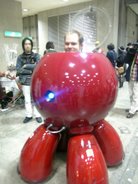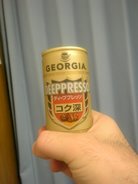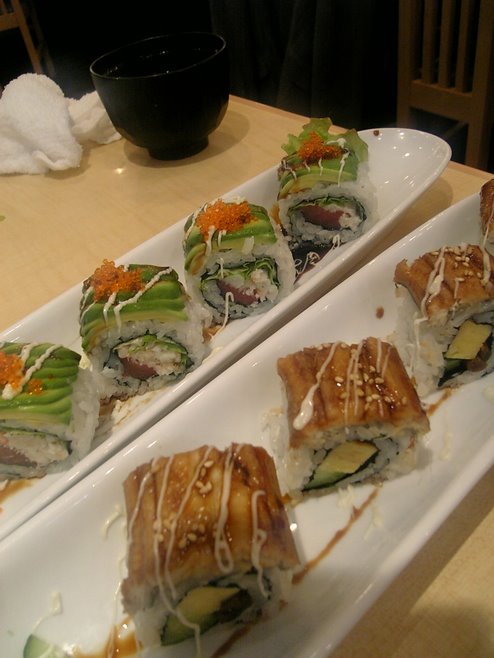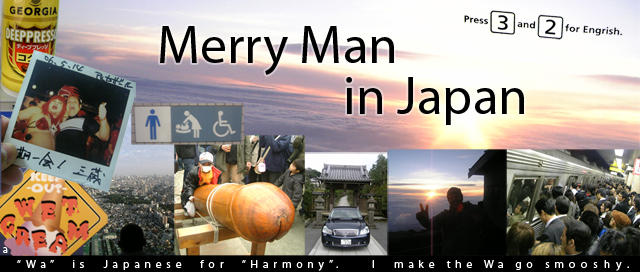TV is a wonderful way to learn about culture. While I've mostly given up TV for this new fangled "internet" thing, I do enjoy the bits and pieces of Japanese TV that make it to the net. Here are some of the best ones I've turned up recently.
These shows are amazing because they have no qualms about using "physical pain" as the primary source of entertainment. There's also a healthy dose of shame here. The shame is the interesting bit, because shame is the primary means of enforcing social rules here in Japan. Drinking on the street isn't illegal, but it is discouraged. People will stare and frown and generally express that they feel your behaviour is "shameful". Public shaming is among the worst punishments, as most social discipline is expressed in a private setting. Taboos are fascinating, and therefore, everyone loves watching some poor naked sap get pitched down a ski hill with his willy waving around. It's also dead funny for just about everyone but the doodle dangling downhiller.
On to the "pain" bit. This is fun because pain itself is funny, but we feel a bit guilty when we watch someone else get hurt (even if you sometimes laugh a bit... and I'm looking at you "Three Stooges".) The solution to this little ethical dilemma is to use the THREAT of pain as a driver.
Again, watching someone scream for his life can be pretty funny when you know he'll be ok in the end. Want proof? Take a ride in this taxi.
I wonder what they tell people when they make them sign the waivers. After all, I doubt that they're spoiling the prank...
This next bit is purely about scaring the living crap out of people. It's wickedly funny, because the camera operator knows what sells: people screaming in sheer terror while we laugh at their misfortune. Sounds evil doesn't it? Clicky Clicksity...
I find Japanese TV most intriguing for the use of a studio audience and call-out boxes to display people (often celebrities) reacting to key moments. I suspect that they use this image to let you know which "reaction" you are expected to have. Shocked? Happy? Amazed? What if you're unsure? Well, just follow the guy in the box. They pop them onto the screen and show the viewer that it is socially acceptable to laugh out loud, cry or shout at the contestant.
The in-show commentators are seemingly designed to create the feeling that TV is more of a community-based experience than a personal one, which is very important in a society that pursues unity to such a large extent. The studio audience lets you seek consensus, or at least the generally accepted way to react to a given situation.
After all, the whole audience is laughing. Why aren't you?
skip to main |
skip to sidebar




the best way to end the day

It's like culture shock, but in reverse.
Adventure = Good

- Merry Man
- Tokyo, Japan
- Culture shock is what happens when you live in a foreign country, and you often become irritated or frustrated by all of the cultural differences. Culture Shock makes people bitter, angry and frustrated. It makes people hate all the little things that make a nation like Japan unique, and it has the potential to put a real damper on your ex-patriot life. One way to fight Culture Shock is to be hellbent on being more shocking than any given cultural situation. I have a dirty mind, a sick sense of humour and I firmly believe in eating very strange things to assert my rightful place on the food chain. Welcome to my little window on Japansanity.
Randomness = Good

Labels
- japan (36)
- engrish (32)
- funny (32)
- culture (28)
- pictures (27)
- food (20)
- foreigners (20)
- weird (16)
- japanese english (15)
- engrish-ish (14)
- fucked up shit (11)
- japanese (11)
- Traditions (10)
- travel (10)
- wonderful (10)
- english (8)
- Tokyo (7)
- amusement (7)
- irony (7)
- let's advertising (7)
- penis (7)
- tourism (7)
- twisted (7)
- I'm really sorry (6)
- culture shock (6)
- japanese "girls" (6)
- kyoto (6)
- restaurants (6)
- drinking (5)
- fuji (5)
- girls (5)
- japanese culture (5)
- japanese girls (5)
- korea (5)
- trains (5)
- yuck (5)
- Festivals (4)
- Summer (4)
- bleech (4)
- dress up (4)
- emo (4)
- fuji pictures (4)
- history (4)
- izakayas (4)
- janglish (4)
- odakyu line (4)
- parties (4)
- playboy (4)
- shibuya (4)
- sport humping (4)
- stupid (4)
- sushi (4)
- teaser (4)
- adventure (3)
- anal (3)
- art (3)
- birthday parties (3)
- cops (3)
- friends (3)
- fujikyu (3)
- karaoke (3)
- movies (3)
- products (3)
- signs (3)
- silly (3)
- television (3)
- tentacles (3)
- translation (3)
- unfunny (3)
- vacation (3)
- women (3)
- Action Movie Stars (2)
- Australia (2)
- Canada (2)
- about procrastinating (2)
- boobies (2)
- business people (2)
- cock rock (2)
- eew (2)
- enlightenment (2)
- fancy dress (2)
- farting (2)
- geisha (2)
- geishas (2)
- good (2)
- hostess (2)
- illegal (2)
- kanji (2)
- maids (2)
- nature (2)
- ninjas (2)
- places (2)
- preview (2)
- rock gardens (2)
- safety (2)
- samurai (2)
- shinjuku (2)
- sick (2)
- strange (2)
- temples (2)
- websites (2)
- wigs (2)
- xenophobia (2)
- xenophobiaish (2)
- zoos (2)
- Antique Junk (1)
- BBQ (1)
- Disco (1)
- Fireworks (1)
- Hokusai (1)
- Ryoanji (1)
- Science Museum (1)
- TMNT (1)
- Thumb War (1)
- UFO catcher prizes (1)
- Yatta (1)
- airbags (1)
- all nighter (1)
- all your base are belong to us (1)
- animals (1)
- anime (1)
- atami (1)
- babies (1)
- baseball (1)
- bicycling (1)
- bling (1)
- buddha (1)
- cats (1)
- censorship (1)
- cheat (1)
- cheating (1)
- children (1)
- china (1)
- chinatown (1)
- choclate (1)
- christmas (1)
- coffee (1)
- cola (1)
- costumes (1)
- crazy (1)
- daikanyama (1)
- dance (1)
- dancing (1)
- death (1)
- dog hotel (1)
- drag queens (1)
- edo era (1)
- ego (1)
- fear (1)
- films (1)
- fish (1)
- garbage (1)
- gay/okama (1)
- gestures (1)
- goodbye (1)
- grammar (1)
- halloween (1)
- handfantasy (1)
- harmony (1)
- haunted houses (1)
- hickies (1)
- holidays (1)
- horror (1)
- hostess club (1)
- kinkaku-ji (1)
- kinkakuji (1)
- lawbreaking (1)
- lesbians (1)
- let's (1)
- links (1)
- lizard (1)
- love (1)
- mamacherry (1)
- midori sushi (1)
- monks (1)
- nambanjin (1)
- noborito (1)
- okama (1)
- onsen (1)
- pets (1)
- philosophy (1)
- photobucket (1)
- post (1)
- pub (1)
- pyjammas (1)
- relationships (1)
- rides (1)
- roller coasters (1)
- roppongi (1)
- ryokans (1)
- sakuragicho (1)
- sakuraguicho (1)
- santa claus (1)
- sashimi (1)
- scorpion (1)
- sento (1)
- sex (1)
- shinkansen (1)
- shrine (1)
- shrines (1)
- sleeping people (1)
- snack (1)
- squid-on-a-stick (1)
- star wars (1)
- students (1)
- sunkus (1)
- sunrise (1)
- survey (1)
- suzume (1)
- teaching (1)
- the (1)
- theme parks (1)
- throbbing (1)
- todai-ji (1)
- todaiji (1)
- toilets (1)
- transit (1)
- video (1)
- wa (1)
- water (1)
- winter (1)
- work (1)
- writing (1)
- yasukuni (1)
- yum (1)
- zen (1)
- zero wing (1)
- 竜安寺 (1)
Glorious Deepresso

Oldnanigans
-
▼
2007
(40)
-
▼
January
(17)
- Tentacles: A Cultural Legacy
- Pub: A Misnomer
- Compotabilty Conspiracy? Let's Go Down!
- Handywoman
- Self Esteem: Now 50% less!
- illegallity for your amusement and education
- And then there was one....
- Sales Pitches!
- Potty Minded
- A small favour
- Trifecta
- Really Sorta Kinda Fast?
- Let's Embarassing!
- Socktual Harassment.
- Japanese Supermarkets: Rather Superb
- Skipping over the pond
- I'm Huge (in Japan)
-
▼
January
(17)
E-people
- David's Show Tunes & Electrocoustica
- Ed the Cat - a more ... mature perspective on Japan
- Felicity's Felicity
- Heather, Happiness and Candida
- Japan Probe - funny news, culture and whatnot from J-land
- Metropolis - a Tokyo English Mag
- Raf: Angry and Polish. Huzzah!
- Tokyonodoko: what to do and where to do it
Japanese Food

the best way to end the day
Merry Man


1 comment:
I find Japanese TV most intriguing for the use of a studio audience and call-out boxes to display people (often celebrities) reacting to key moments. I suspect that they use this image to let you know which "reaction" you are expected to have. Shocked? Happy? Amazed? What if you're unsure? Well, just follow the guy in the box. They pop them onto the screen and show the viewer that it is socially acceptable to laugh out loud, cry or shout at the contestant.
meh. I think its more about having friends around. You are not just sitting in your tiny windowless 1dk flat watching television, you are sitting in your tiny flat watching television with a panel of telebi tarento.
The last clip had a scene with Yabe and Okamura. Those guys are funny. Okamura will do just about anything.
Okamura meets Morning Musume and proves he's a better dancer. Be sure to watch the whole thing, they do a costume change.
Okamura meets wrestling icon Antonio Inoki and get his ass kicked.
Post a Comment